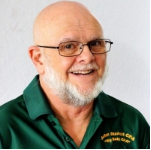
When one embarks on looking at what might happen with taxes, that path is fraught with many hazards. What a candidate says may not be what is actually proposed. What the elected candidate proposes may be modified or totally shot down by Congress. What Congress passes may not be signed by the President. However, I have my crystal ball and can foresee what the future holds in terms of future changes in taxes. Yeah, right. Unfortunately, that crystal ball is extremely cloudy and I cannot say with certainty what will happen.
This article is not exhaustive, it looks at those tax proposals made by the candidates that would have an impact on non-profit organizations. In addition, I am reporting the changes as proposed by the candidates and am attempting to remain neutral in my analysis of the impacts.
The current top marginal tax bracket for individual taxes is 39.6%, and has been there for a number of years. Trump would reduce that to 33%. Clinton would raise the maximum rate to 43.6% for those with taxable incomes in excess of $5,000,000. In addition she would adopt the so-called “Buffet rule” setting a minimum 305 tax on individuals making more than $1,000,000.
The current top rate for corporations is 35%, the highest in the world. Clinton would make no change here; Trump proposes to drop the maximum rate to 15%.
Pass-through entities, such as partnerships and S Corporations do not pay tax, but the income is passed through to the owners, who currently pay tax at their current marginal rate. Clinton proposes no change here, but Trump would reduce the maximum rate on pass-through income to 15%.
The Social Security wage base is currently $118,500 for 2016 and it increases annually. Trump has not identified any specifics regarding changes here, but Clinton would increase the rate for those with incomes in excess of $250,000 but has offered no further specifics.
Trump has identified no specifics regarding changes in itemized deductions. Clinton proposes that itemized deductions receive a maximum benefit of 28% regardless of tax bracket. The way this would presumably work is that a taxpayer who is in a bracket at 28% or less would experience no change. However, a taxpayer in a higher bracket would only get a 28% deduction for itemized deductions, rather than up to 39.6%. Along that same line, current law limits charitable contributions to 50% of adjusted gross income, with some additional limitations. Technically, neither candidate would change this, but Clinton’s 28% limitation on itemized deductions would have an effect here also.
In 1954, Congress passed a law at the request of then-Senator Lyndon B Johnson that prohibited 501(c)(3) organizations from political campaign activity. Failure to adhere to this law can result in the non-profit losing its exempt status. Trump proposes that this prohibition be repealed. Clinton has taken no position on this issue.
This article has dealt with the proposals from the major candidates for President. There are a number of actual proposals in regard to taxation currently before Congress. The Charity Act deals with a number of tax issues facing non-profits. The Preventing IRS Abuse and Protecting Free Speech Act proposes to protect donor privacy. The First Amendment Defense Act would prohibit the Federal Government from taking discriminatory action against a person based on a religious belief or moral conviction. These may or may not come to fruition but are too uncertain to delve into a detailed discussion at this point.























Recent Comments